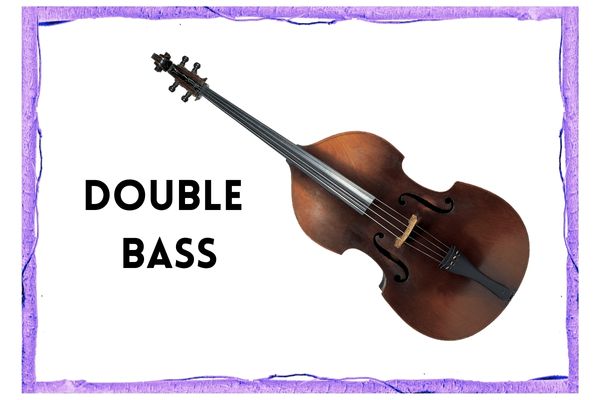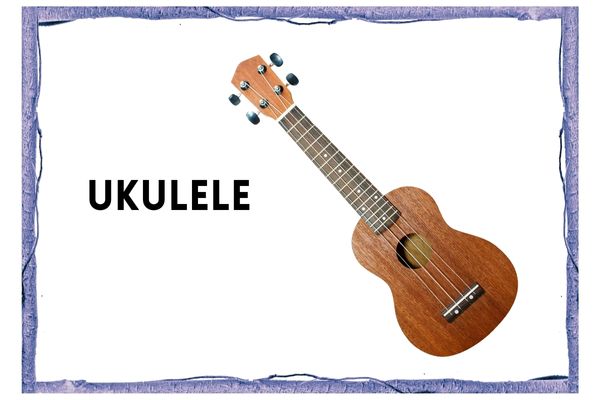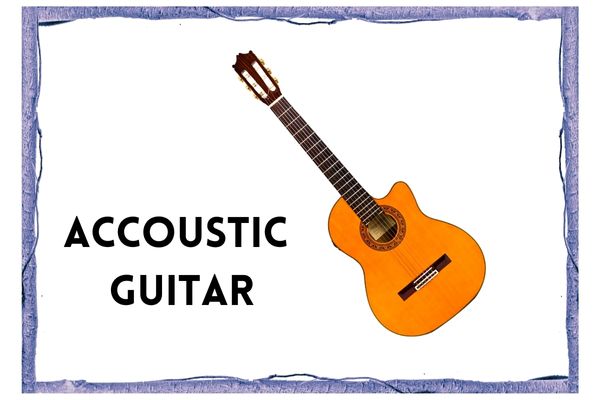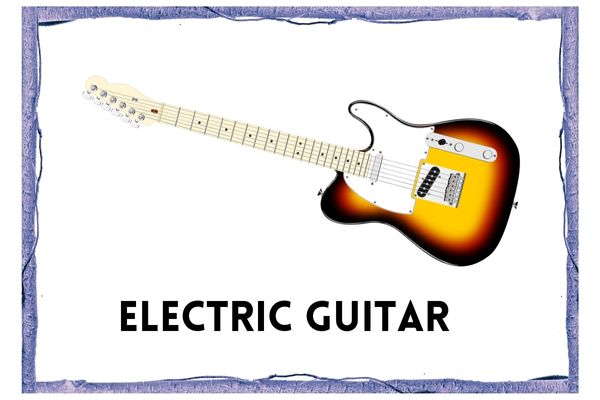What can I play?
String Instruments
- String Instruments have strings that vibrate to make sound.
- They can be played, with a bow (like a violin), struck with hammers (like a piano), or plucked with fingers (like a guitar)
- The bodies of the string instruments, which are hollow inside to allow sound to vibrate within them, are made of different kinds of wood,
- The part of the instrument that makes the sound is the strings, which are made of nylon, steel or sometimes gut.
- The handle of the bow is made of wood and the strings of the bow are actually horsehair from horses' tails!
- The strings are played most often by drawing a bow across them.
- Sometimes the musicians will use their fingers to pluck the strings, and occasionally they will turn the bow upside down and play the strings with the wooden handle.
- They used to be known as chordophones.
Find out more about string instruments below
Upper Strings
Violin

- The violin is the baby of the string family, and like a baby, makes the highest sound.
- You play the violin by resting it between your chin and left shoulder. Your left hand holds the neck of the violin and presses down on the strings to change the pitch, while your right hand moves the bow or plucks the strings.
- There are more violins in the orchestra than any other instrument (there can be up to 30!) and they are divided into two groups: first and second. First violins often play the melody, while second violins alternate between melody and harmony.
- A typical-sized violin is around 24 inches (two feet) long, with a slightly longer bow.
Viola

- The viola is the older sister or brother of the violin. It is slightly larger, just over two feet long, and has thicker strings, which produce a richer, warmer sound than the violin.
- You play the viola the same way as you do the violin, by resting it between your chin and shoulder. Your left hand holds the neck of the viola and presses down on the strings to change the pitch, while your right hand moves the bow or plucks the strings.
- There are usually 10 to 14 violas in an orchestra and they almost always play the harmony.
Cello

- The cello looks like the violin and viola but is much larger (around 4 feet long), and has thicker strings than either the violin or viola.
- Since the cello is too large to put under your chin, you play it sitting down with the body of the cello between your knees, and the neck on your left shoulder. The body of the cello rests on the ground and is supported by a metal peg. You play the cello in a similar manner to the violin and viola, using your left hand to press down on the strings, and your right hand to move the bow or pluck the strings.
- Of all the string instruments, the cello sounds most like a human voice, and it can make a wide variety of tones, from warm low pitches to bright higher notes.
- There are usually 8 to 12 cellos in an orchestra and they play both harmony and melody.
Double Bass

- This is the grandfather of the string family. At over 6 feet long, the double bass is the biggest member of the string family, with the longest strings, which allow it to play very low notes.
- They are so big that you have to stand up or sit on a very tall stool to play them, and it helps if you have long arms and big hands. Like the cello, the body of the double bass stands on the ground, supported by a metal peg, and the neck rests on your left shoulder. You produce sound just like on a cello, using the left hand to change pitch and the right to move the bow or pluck the string.
- The 6 to 8 double basses of the orchestra are almost always playing the harmony.
Lower Strings
Ukulele

- The ukulele also called a uke, is a member of the lute family of instruments of Portuguese origin and popularized in Hawaii. It generally employs four nylon strings
- It is usually played with the bare thumb and/or fingertips, or a felt pick
- The ukulele is generally made of wood, though variants have been composed partially or entirely of plastic or other materials. More expensive ukuleles are made of solid hardwoods such as mahogany. The traditionally preferred wood for ukuleles is a type of acacia endemic to Hawaii, called koa.
- The tone and volume of the instrument vary with size and construction. Ukuleles commonly come in four sizes: soprano, concert, tenor, and baritone.
- In the Hawaiian language the word ukulele roughly translates as "jumping flea",[9] perhaps because of the movement of the player's fingers.
- British singer and comedian George Formby was a ukulele player
Acoustic Guitar

- The guitar is one of the oldest and most basic instruments in the music world
- It produces sound through the vibration of strings.
- The sound is produced by plucking with the fingers or with a pick on the string. The string vibrates at a certain frequency and also creates many harmonics.
- It is one of the famous musical instruments, although it isn't included in an classical orchestra. Guitars are one of the major features of modern music.
Electric Guitar

- An electric guitar is a guitar that requires external amplification in order to be heard at typical performance volumes, unlike a standard acoustic guitar. It uses one or more pickups to convert the vibration of its strings into electrical signals, which ultimately are reproduced as sound by loudspeakers.
- You play it the same as an acoustic guitar by pressing and holding strings down with your left hand. and then striking the strings with your right hand to creates music
- It was invented in 1932, the electric guitar was adopted by jazz guitar players, who wanted to play single-note guitar solos in large big band ensembles.
- In rock, the electric guitar is often used in two roles: as a rhythm guitar, which plays the chord sequences or progressions, and riffs, and sets the beat (as part of a rhythm section); and as a lead guitar, which provides instrumental melody lines, melodic instrumental fill passages, and solos
Find out more about musical instruments on the BBC Bitesize website
